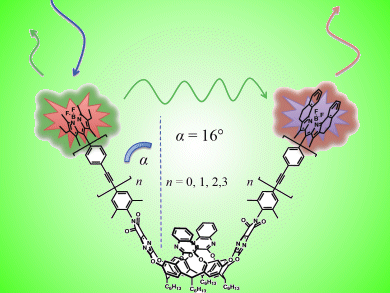Monitoring the behavior of dye-labeled cavitands by variable-temperature NMR and fluorescence resonance energy transfer (FRET) spectroscopy experiments leads to better understanding of the dynamic behavior of advanced materials that serve as molecular grippers, switches, or receptors.
François Diederich and co-workers, Zürich, Switzerland, have synthesized a series of borondipyrromethane (BODIPY)-dye-labeled resorcin[4]arene cavitands with different lengths of oligo(phenylene–ethynylene) spacers between the dyes and the macrocyclic rim.
The FRET efficiency was correlated with the absolute distances between the donor and acceptor dyes and thus the Förster radius and the average solution-state opening angle of the cavitand systems were determined.
- FRET Studies on a Series of BODIPY-Dye-Labeled Switchable Resorcin[4]arene Cavitands
I. Pochorovski, B. Breiten, W. B. Schweizer, F. Diederich,
Chem. Eur. J. 2010, 16(42).
DOI: 10.1002/chem.201001625




